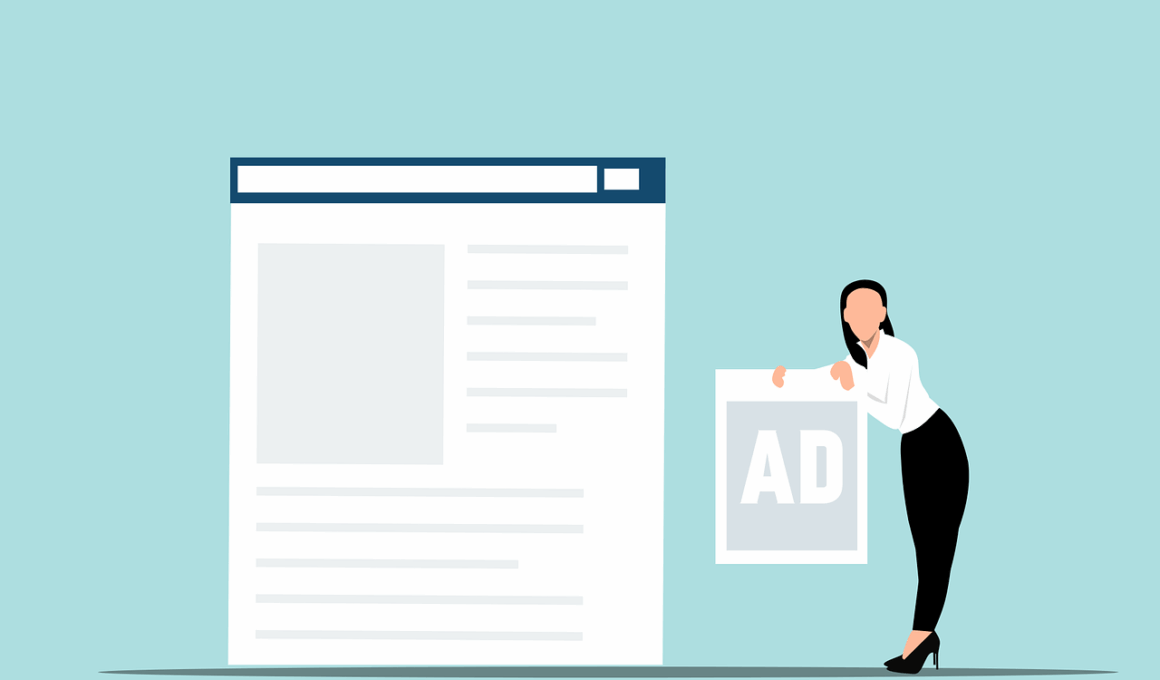Optimizing Landing Pages with Marketing Automation for More Leads
Optimizing your landing pages through marketing automation is vital for generating more leads. A landing page that is tailored to your audience can significantly increase conversion rates. The first step in this process is understanding your target audience’s needs. An effective landing page usually includes clear and concise messaging, which speaks directly to the pain points of potential customers. To achieve this, it’s important to utilize automation tools that help in collecting and analyzing data on user behavior. For instance, engaging with tools like A/B testing software can help you fine-tune content to see what resonates best. Another essential component is optimizing loading speeds; a page that takes too long to load can lead to high bounce rates and lost opportunities. Furthermore, you should ensure mobile responsiveness as many users access content through smartphones or tablets. Generally, automated solutions can assist in personalizing content based on user interactions. This personalization creates a more engaging experience leading to higher conversions and fostering long-term customer relationships. Thus, investing in marketing automation will ultimately allow businesses to make data-driven decisions for landing page optimization.
Another crucial aspect is the integration of strong call-to-action (CTA) buttons. According to numerous studies, strategically placing options to ‘Sign Up’ or ‘Download Now’ can skyrocket conversion rates. Your CTA should be compelling, specific, and matched with attractive graphics to draw user attention effectively. Utilizing marketing automation platforms can help in dynamically altering CTA buttons based on user behavior, leading to improved results. A/B testing these buttons using automation can also guide you toward the most effective design and wording. Additionally, leverage social proof elements such as testimonials and client logos to build trust. Optimized landing pages should also factor in relevant keyword placements for SEO purposes, improving visibility and search rankings. Marketing automation can automate the tracking of these keywords, allowing you to consistently refine and enhance your pages. Moreover, consider employing segmentation to deliver targeted messages that resonate with specific audience groups, ultimately focusing efforts where they will yield the greatest results. Each of these components interplays beautifully, forming a sophisticated strategy for lead generation and conversion optimization as businesses strive for measurable success.
Utilizing Analytics for Continuous Improvement
Leveraging analytics for the continuous improvement of landing pages is paramount. Marketing automation allows businesses to track user interactions seamlessly, providing valuable insights into which elements work effectively. By monitoring metrics such as bounce rate, time spent on the page, and click-through rates on CTAs, adjustments can be made in real-time. Analytics can reveal user paths, highlighting where potential customers drop off, thus pinpointing issues that need immediate attention. Additionally, setting up goals and tracking conversions within your analytics platform can ensure that you’re focused on fulfilling your objectives. Use these insights to create detailed reports which outline areas for improvement or success. Regularly revisiting these reports fosters a culture of continuous learning, allowing teams to adapt strategies quickly based on real-world feedback. Furthermore, these analytics can help identify trends over time, guiding strategic planning toward future campaigns. Taking advantage of automation in reporting tasks will save time while ensuring you’re always informed about your landing page performance. Ultimately, prioritizing analytics in your marketing efforts is the bedrock of successful lead generation and conversion strategies.
Moreover, integrating chatbots into your landing pages can greatly enhance user engagement. Marketing automation tools today allow for sophisticated chatbot implementations that can answer queries instantly, guiding users through various stages of the sales funnel. An interactive user experience often translates into higher engagement levels, thus fostering lead generation. These chatbots can handle multiple queries simultaneously, providing visitors with the information they need to make informed decisions. Programming your chatbot with common questions can further streamline interactions, showing customers that you understand their needs. Additionally, you may collect user information through chatbots, automatically feeding this data into your customer relationship management system. This integration allows sales teams to follow up with leads promptly. It’s also beneficial to ensure chatbots offer a human touch, with options for visitors to connect with a real person for more complex inquiries. This balance can enhance user satisfaction and trust in your brand. Therefore, investing in the implementation of chatbots can be a strategic move toward optimizing landing pages and boosting leads through personalized interactions.
Testing and Revising Content Strategy
Continuously testing and revising your content strategy is essential for keeping landing pages relevant. Marketing automation allows you to segment your audience effectively, making targeted campaigns easier. Targeting specific demographics or user behaviors can yield better results than generic approaches. Use A/B testing not only for CTA buttons but also for content variations on landing pages. This iterative approach helps in honing messages that resonate better with your audience. Consider adjusting headlines, images, or even color schemes to see how they impact conversion. The results from these tests should feed back into your overall marketing strategy, allowing you to refine audience targeting continuously. Additionally, regularly updating content can keep it fresh and engaging for returning visitors. Engaging multimedia elements like videos or infographics can make your landing pages more appealing. Utilizing automation tools can help manage updates efficiently, ensuring you always present the freshest and most relevant content for potential leads. Remember, flexibility in your strategy is key; it allows you to pivot quickly in response to audience feedback or market shifts.
Furthermore, creating a sense of urgency on your landing pages can dramatically boost conversions. Marketing automation can facilitate limited-time offers, countdown timers, or exclusive deals visible to potential leads. This psychological trigger can compel users to act swiftly, reducing the chances of indecision. Email campaigns sent through automation can complement these offers, reminding users of expiring deals, thereby driving prompt engagement with your landing pages. Consider incorporating a referral program as well, incentivizing existing leads to share your offers. This strategy not only broadens your reach but also entails lower acquisition costs. Ensure the process is seamless; automated tracking of referrals will help manage this effectively. Another element to instill urgency could be displaying stock levels or how many spots are left for a service. Such details can further motivate leads to act promptly. Therefore, leveraging these tactics through marketing automation will yield effective results in optimizing landing pages for lead generation. Ultimately, instilling urgency, when executed thoughtfully, becomes a powerful ally in achieving your marketing goals.
Conclusion and Future Insights
In conclusion, optimizing landing pages using marketing automation is a multi-faceted approach that yields significant benefits. By integrating analytics, optimizing content, and ensuring a personalized experience, businesses can drive more substantial lead generation. Continuous testing and revisions further fortify this optimization process, ensuring that your efforts are always aligned with audience expectations. As technology evolves, embracing new trends and innovations in marketing automation will be key for staying competitive. The future will likely see even greater integrations of AI, making personalization seamless and more intuitive. Emphasizing user experience will remain paramount, as even minor enhancements can significantly impact conversion rates. As we move forward, adopting an agile mindset will allow businesses to pivot quickly in response to changing consumer behaviors and preferences. This strategy will burden marketers with the responsibility of consistently monitoring performance but will ultimately cultivate a more agile and effective approach to lead gen. Harnessing tools effectively will ensure businesses not only capture leads but also nurture them towards becoming loyal customers in today’s dynamic market.
The potential for generating leads through optimized landing pages is vast when well-executed. Marketing automation harnesses technology to create streamlined, effective processes tailored to user behaviors. By continuously adapting to market changes and implementing targeted strategies, businesses stand to significantly enhance their conversion rates and overall marketing success. Automated solutions are invaluable in managing these tasks efficiently, allowing marketers to focus on strategy and creativity. Keep in mind the importance of consistency throughout all aspects of marketing automation efforts, as a cohesive message can reinforce brand identity and build trust among your audience.


